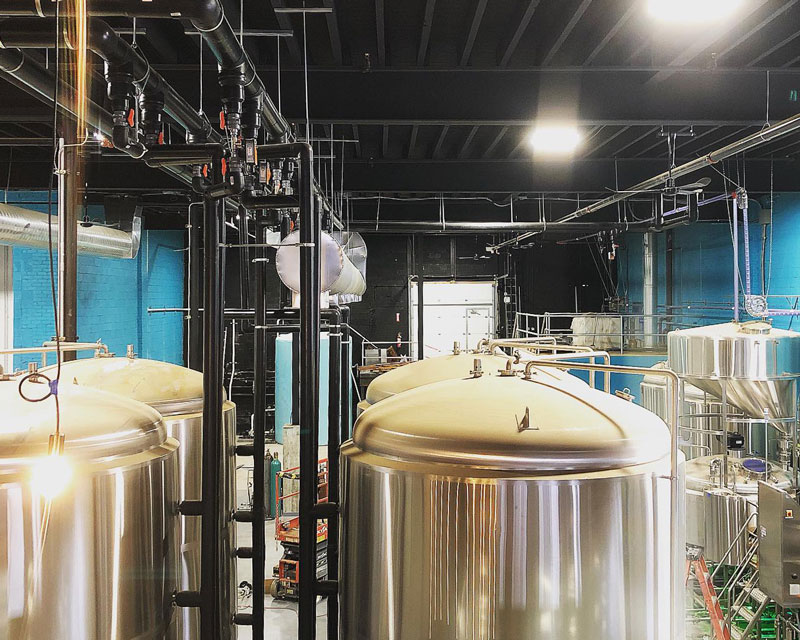Sand City Brewing Co.
Evaluates Water, Chemical, and Energy Usage
 Sand City Brewing Co., located in Northport, New York, produced approximately 2,500 barrels of beer per year in 2020, and has a 50-person tasting room that represents approximately 90% of their sales. From May – August 2020, sustainability specialists from the New York State Pollution Prevention Institute (NYSP2I) at Rochester Institute of Technology (RIT) and Cornell University’s Cornell Enology Extension Laboratory (CEEL) collaborated with Sand City to evaluate opportunities to reduce their water, chemical, energy usage, and waste disposal.
Sand City Brewing Co., located in Northport, New York, produced approximately 2,500 barrels of beer per year in 2020, and has a 50-person tasting room that represents approximately 90% of their sales. From May – August 2020, sustainability specialists from the New York State Pollution Prevention Institute (NYSP2I) at Rochester Institute of Technology (RIT) and Cornell University’s Cornell Enology Extension Laboratory (CEEL) collaborated with Sand City to evaluate opportunities to reduce their water, chemical, energy usage, and waste disposal.
“We enjoyed working with NYSP2I. I was very impressed by the degree of their detail and insight.” - Bill Kiernan, Co-owner

Achievements to date
To reduce waste, Sand City reuses yeast strands, sometimes up to fifteen times for certain types of beers, which decreases the amount of waste produced. To reduce energy use, the brewery has insulated all heat-transfer pipes. Hot liquid is left in the fermenter in order to heat the cleaning solution faster, minimizing the amount of energy spent cleaning the tank. Sand City has also implemented a knockout water-recapture system that sends water from the heat exchanger to the hot liquor tank (HLT). Energy is gained while the cool water passes through the heat exchanger, preheating it for the hot liquor tank. As a result, the energy used to heat the water in the HLT, is utilized multiple times, saving energy.

Opportunities
After performing a site assessment of Sand City, NYSP2I and CEEL specialists made a series of recommendations to improve the brewery’s sustainability strategy. These are listed below.
To reduce water use:
- Install water meters in locations of wastewater disposal to determine where water is used in the brewery. A clearer understanding of how water is flowing in the brewery could help Sand City better focus its sustainability efforts to reduce water use.
To generate less waste:
- Install a filter press or a small centrifuge to reclaim some of the beer that saturates the spent grain at the bottom of the tanks. Sand City staff had indicated that between 15-25% of beer remains in the spent grains and other brewing solids. Based on the annual production of beer, reclaiming this could save 300-500 barrels of beer each year.
To use less chemicals:
- Install a clean-in-place (CIP) system to cut down on chemical and water use in the brewery. These are more efficient than cleaning by hand because of the controlled volumes they use. CIP skids are extremely flexible in terms of design and can accommodate most operation sizes.
- Use sensors, which are used for iodine cleanliness, to determine when caustic solutions are spent or when they can be reused. This will help keep the cleaning process as efficient as possible.
- Use citric acid as a safer alternative for their passivation process. Currently, Sand City, along with most breweries use nitro-phosphoric acid, a chemical that is harmful to the environment. In addition to the environmental benefits, citric acid is generally less hazardous and safer to use than nitro-phosphoric acid.
To be more energy-efficient:
- Switch to light-emitting diode (LED) lights as an easy and efficient way to reduce energy usage. LEDs are highly energy-efficient, lasting significantly longer than fluorescent lighting. LEDs also output less heat, delivering some energy savings, as less cooling is needed.





